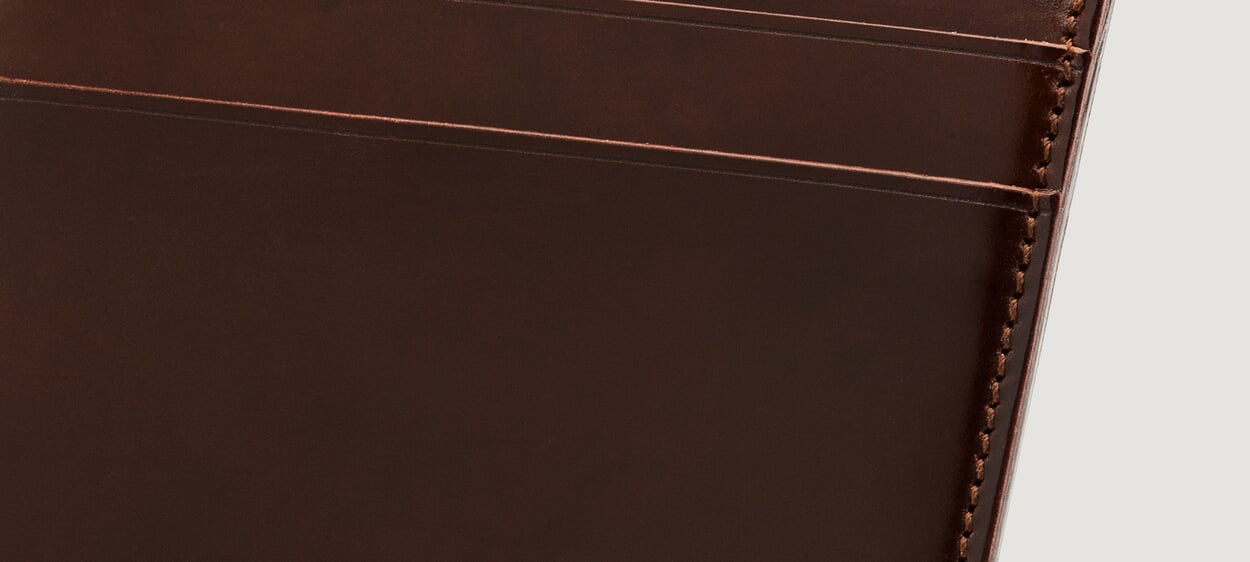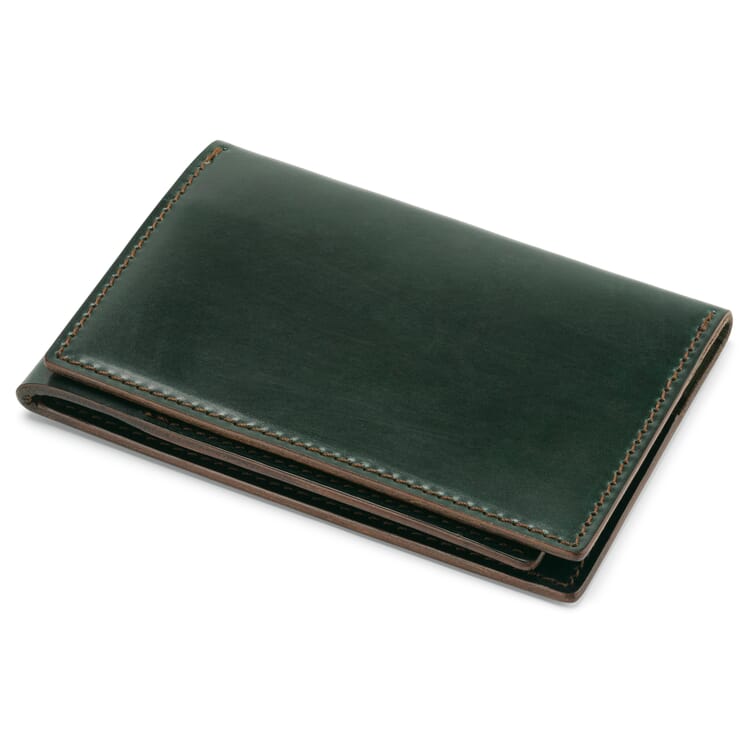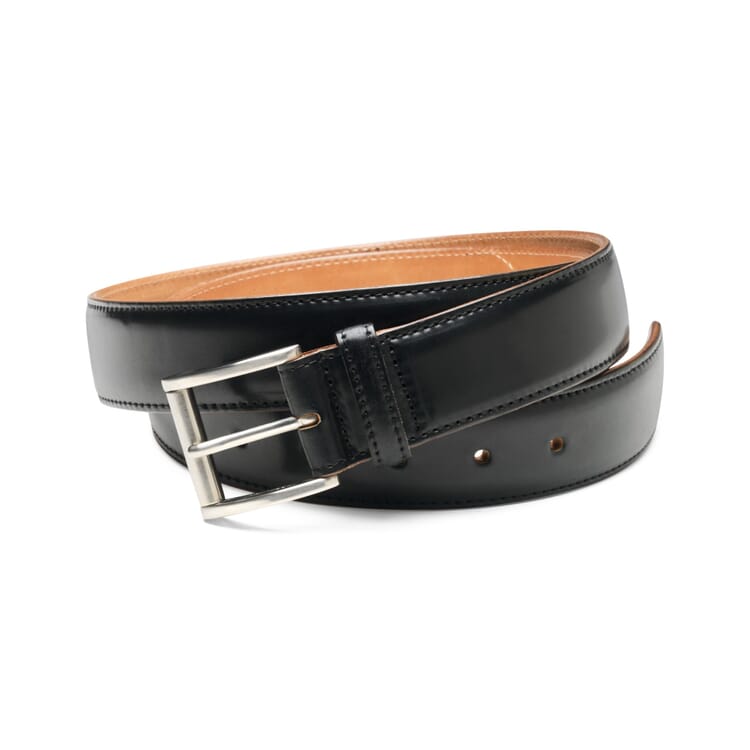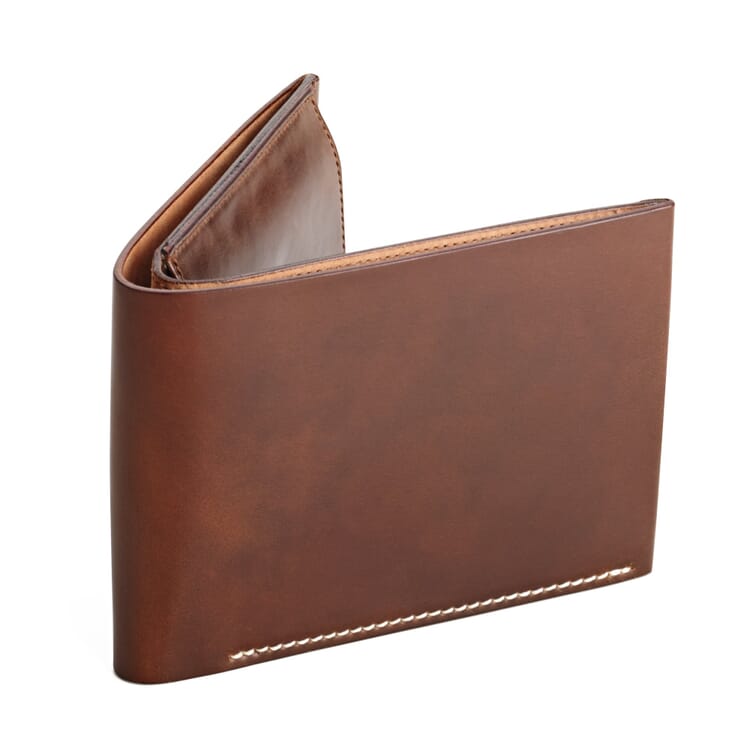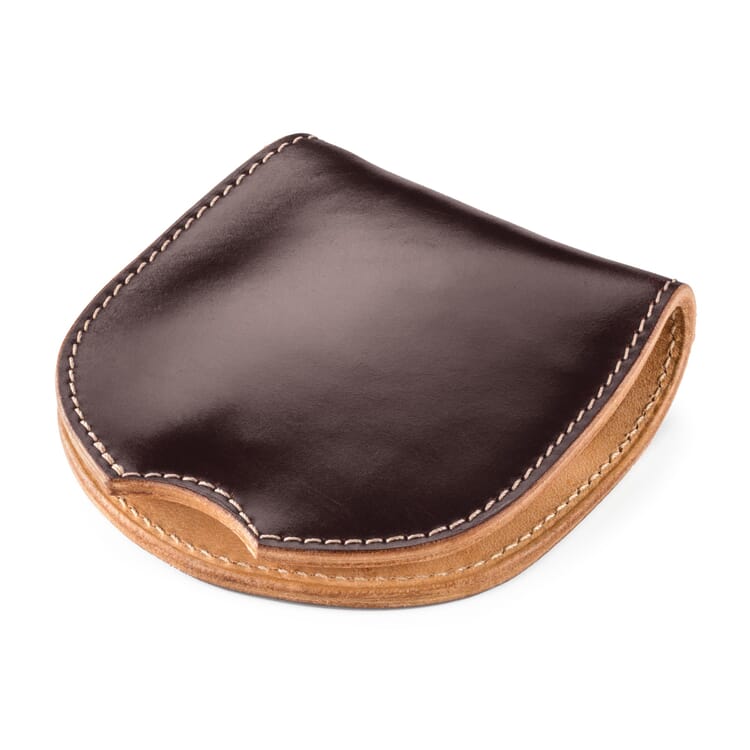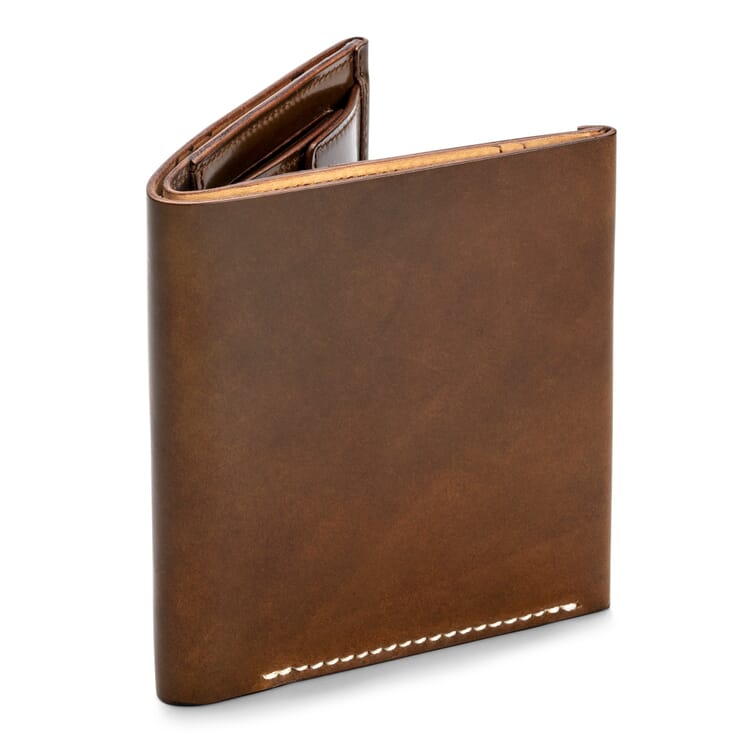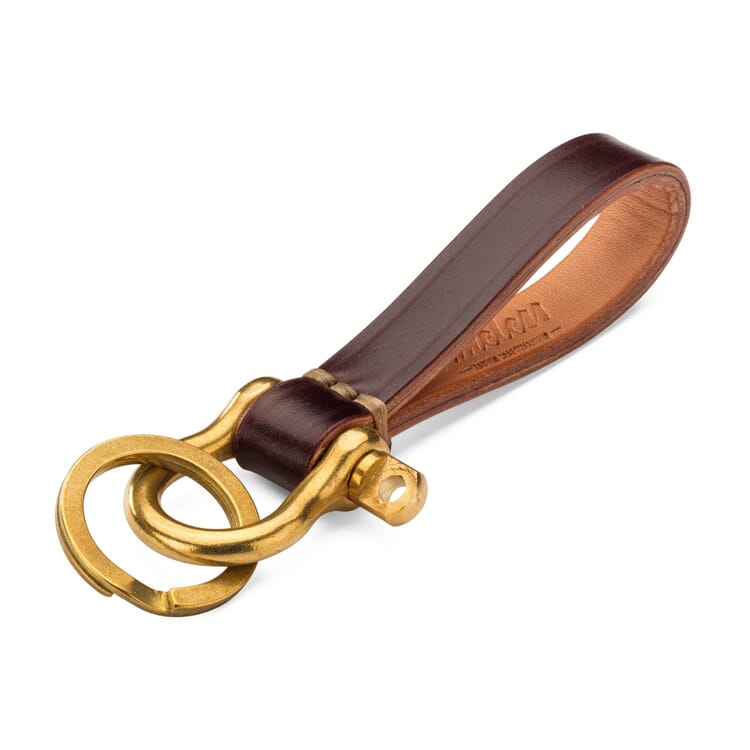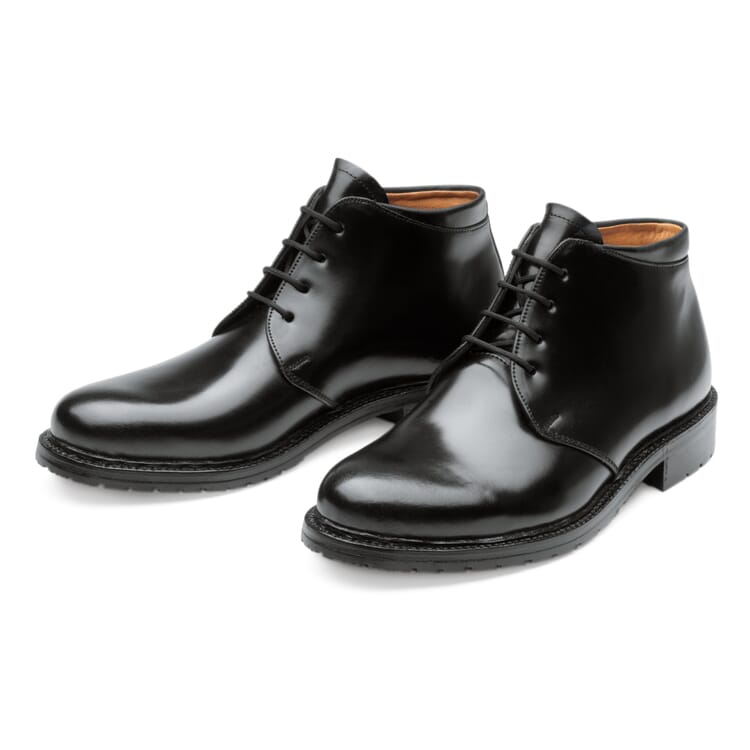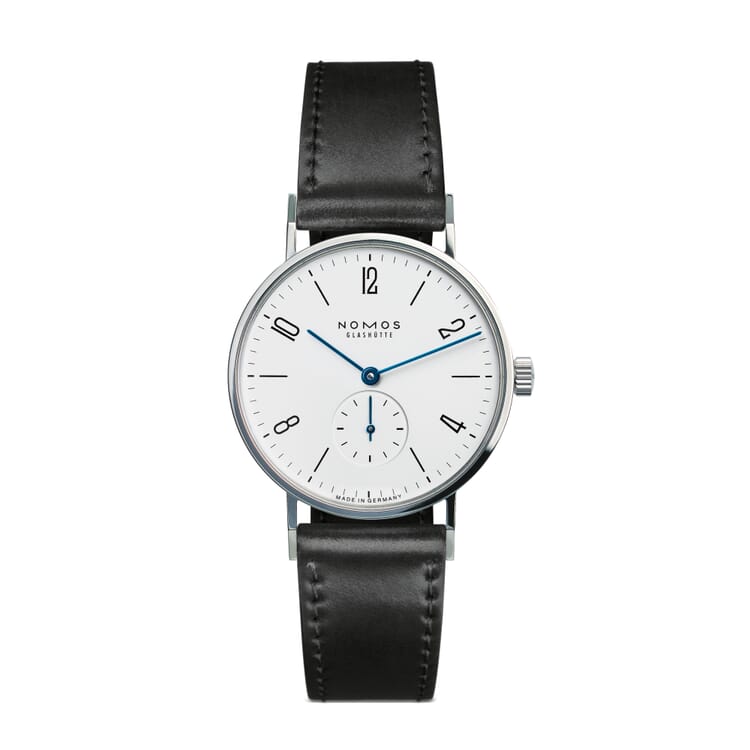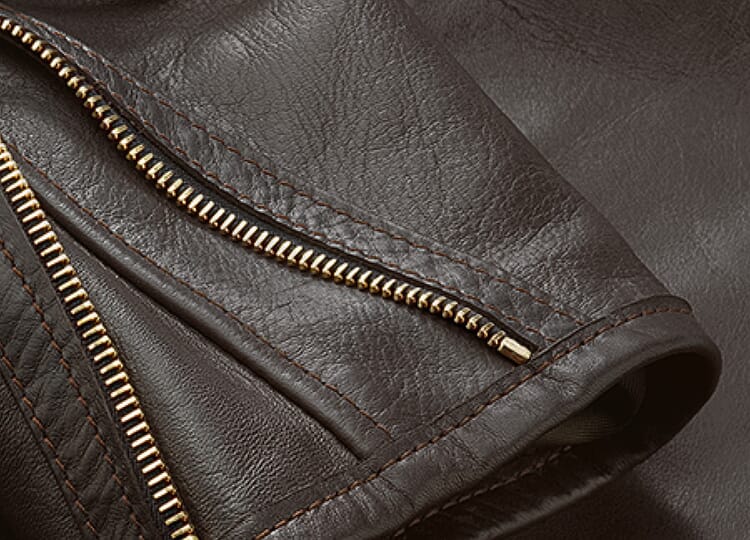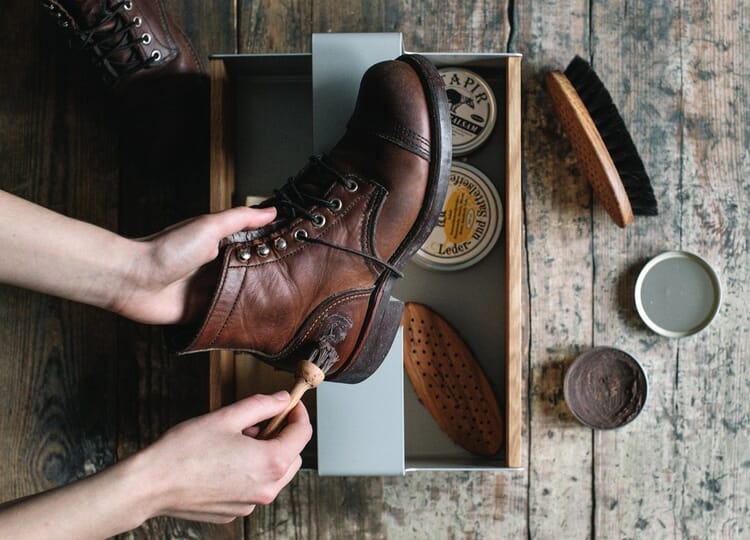- Maple wood
- Alpaca
- Bamboo wood
- Cotton
- Beech wood
- Douglas fir wood
- Oak wood
- Elastane
- Ash wood
- Tanning process
- Hemp fiber
- Deerskin
- Calfskin
- Cashmere
- Cherry wood
- Coconut fiber
- Larch wood
- Leather care
- Lefa
- Linen
- Merino wool
- Moleskin
- Nappa leather
- Walnut wood
- Horse leather
- Cow leather
- Robinia wood
- Virgin wool
- Shell Cordovan
- Silk
- Tencel™
- Suede
- Viscose
Material
Shell Cordovan. Rare luxury leather of incomparable quality
It is one of the noblest and most expensive leathers, and yet it comes not from exotic animals, but from horses. Shell Cordovan is made from the hides of a special breed of cold-blooded horse. While these were often used as draft and work horses in earlier times, they are more common today. Only very specific parts of the hide are used for shell cordovan. The so-called cruppers in the rear part of the horse's back, also called "shells" or "butts", are used. These two shell-shaped pieces are no larger than an A3 sheet. Availability and yield are therefore low and it takes a lot of time and skill to produce this exquisite leather. The name "Cordovan" goes back to the Spanish city of Cordoba in Andalusia, where the local tanneries excelled at this particular processing of horse leather. Today, only a few tanneries still master this artful craft, most notably the famous Horween® tannery in Chicago.
The properties of Shell Cordovan
Shell Cordovan is a vegetable tanned leather of superior quality and is considered almost indestructible. Shoes, belts, wallets and other small leather goods made of it are extremely soft, supple and durable. They are more expensive to purchase, but the investment is worth it, as will become even clearer in the following - The skin sections used for Shell Cordovan have a strongly compressed fiber structure. Unlike many other leathers, the flesh side of the Shell Cordovan is processed into the cover side, not the grain. The leather is treated in a complex process until a fine-pored, almost mirror-like surface is created. - This fine-pored surface and the high fat content of the leather make Shell Cordovan especially water-repellent. - Characteristic of Shell Cordovan are its smoothness and dimensional stability, which are retained for years. Shoes made of this leather gradually mold to the foot like a second skin. It is therefore important to buy them close-fitting for a good fit - Shell Cordovan exhibits intensive color depth and brilliance. The classic shade is "Oxblood", a dark burgundy red, referred to simply as "No. 8" by the Horween® tannery - Leather goods made of Shell Cordovan have what it takes to be lifelong companions. Over time, they develop an individual patina that makes them appear even more distinctive and elegant.
Shell Cordovan from the traditional tannery Horween®.
Leather also needs to mature - like a good wine, this is especially true for Shell Cordovan. The traditional Horween® tannery in Chicago has specialized in the production of horse leather since 1905. There, the horse hides are traditionally tanned in the pit for about 60 days with vegetable tanning agents such as ground acacia and maple wood or quebracho, an Argentine sand wood plant. The long soaking time ensures that the tanning agents can penetrate the dense fiber mesh of the shells. After the leather pieces have been dried on glass plates, natural oils composed according to an old recipe are massaged in by hand - a process known technically as "smearing". This is followed by a storage period of at least 90 days, during which the oil is allowed to fully absorb into the leather. After that, the leather is sorted and dyed by hand. The last step is the so-called glossing process, during which the leather glides over glass or steel rollers and finally, through pressure, friction and heat, the characteristic gloss of Shell Cordovan is created. After this months-long production period, the leather is "matured" and possesses the exceptional quality for which it is known worldwide.
Selected products with Shell Cordovan
Recommended Topics
Horsehide - the term "horsehide" is also commonly used - can be made from the hides of various horse species. Since horses are rarely used for agricultural purposes today, it belongs to the rare and luxurious types of leather. Depending on which leather goods are produced, different areas of the hide come into question.
View moreHow much care a leather needs depends on various factors - for example, the particular leather goods and leather type, the use and wearing habits and also significantly on the quality of the leather. For high-quality leather jackets, for example, frequent wearing is the best care. This is because the leather is continuously tumbled and kept supple by the movement.
View more
